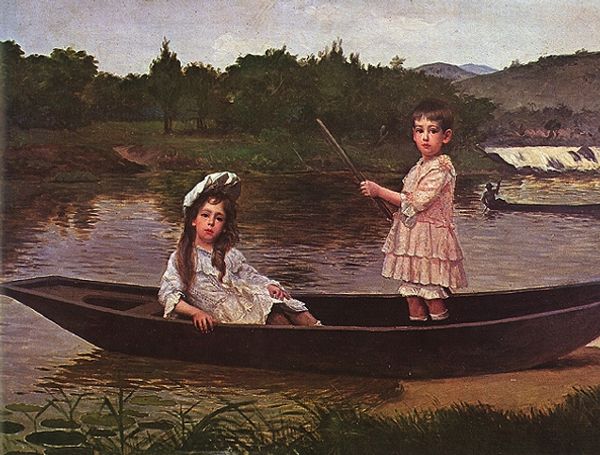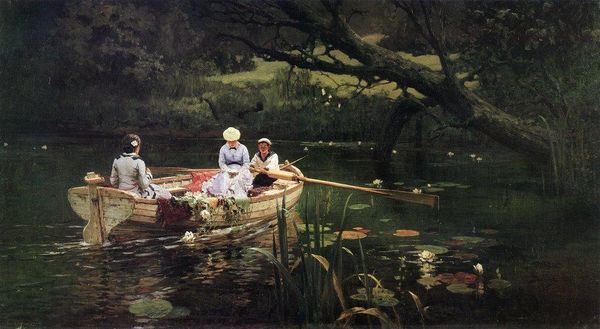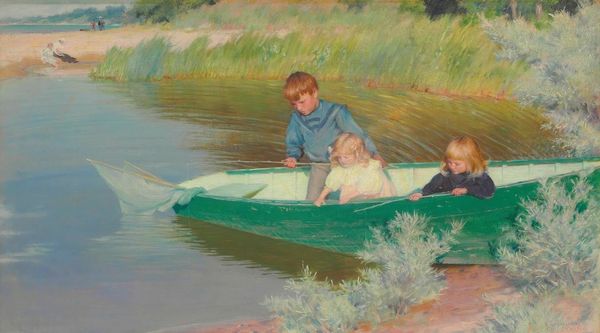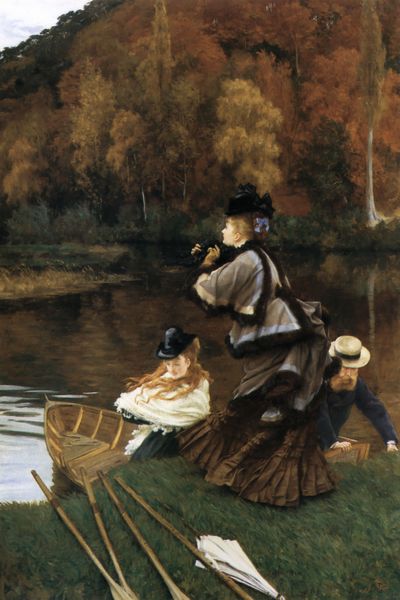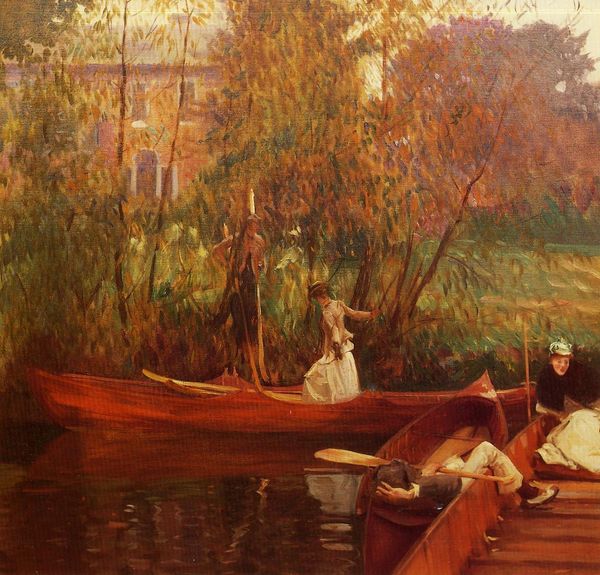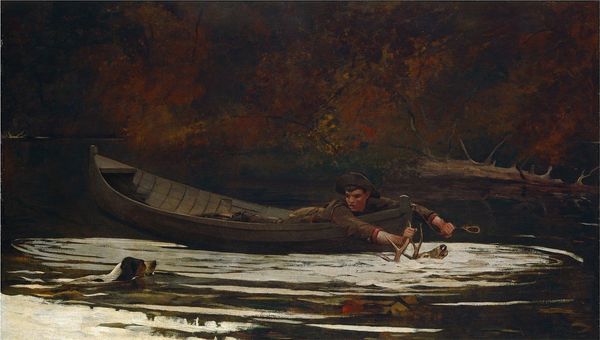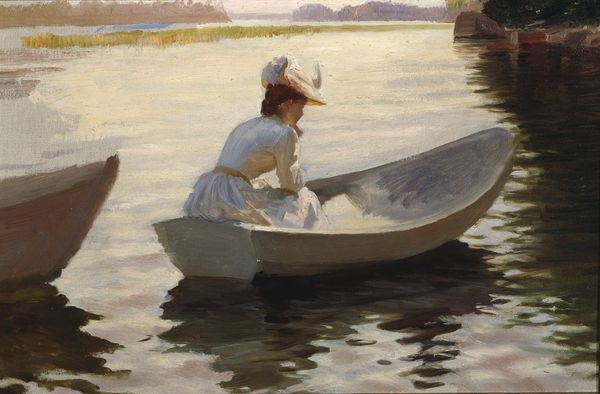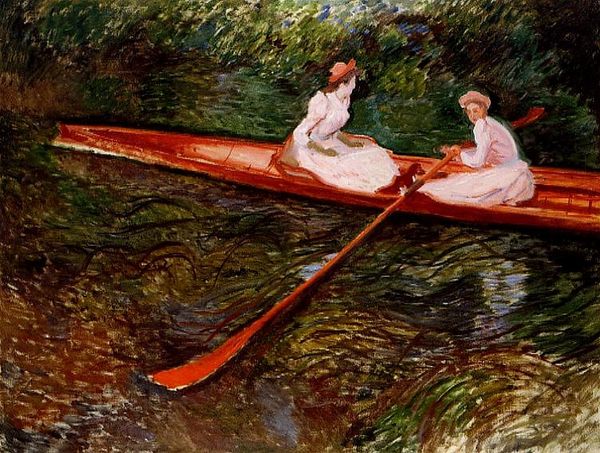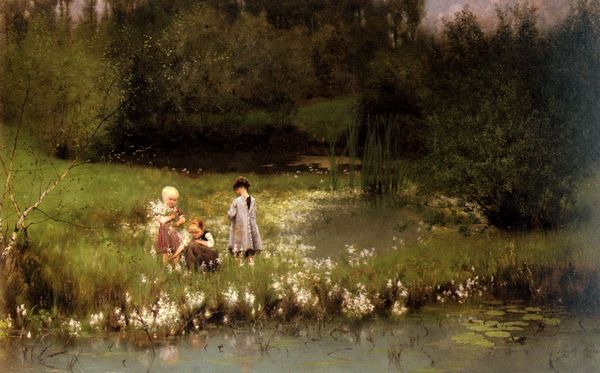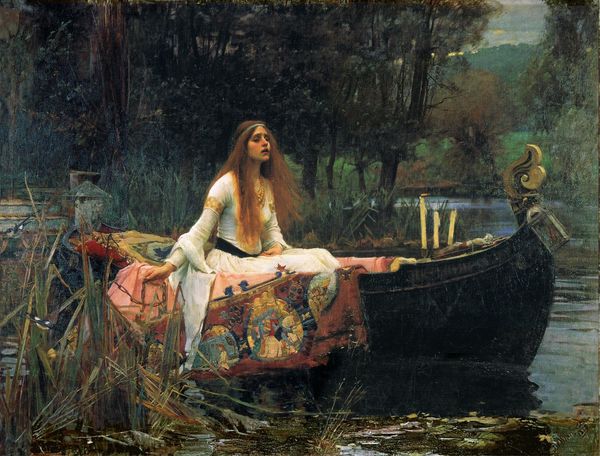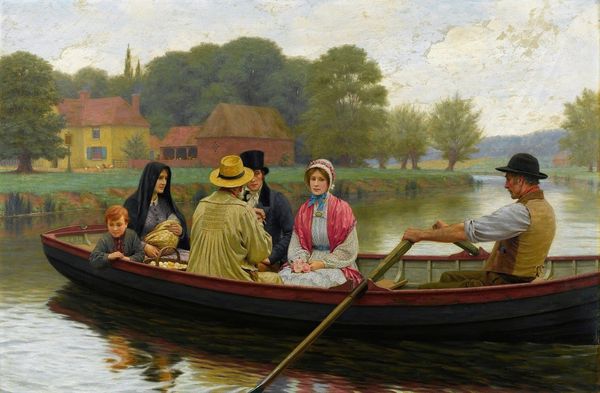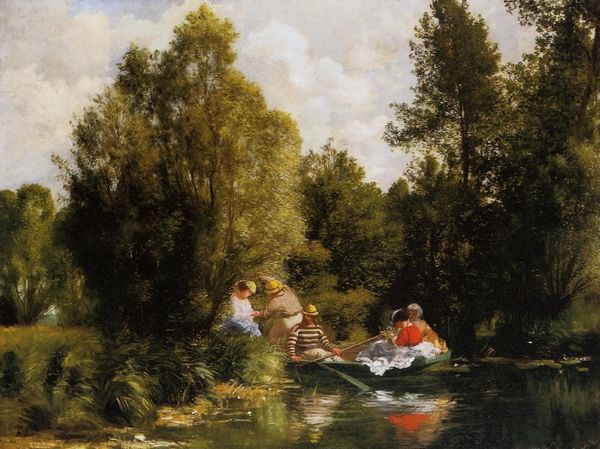
Copyright: Public Domain: Artvee
Curator: This is James Tissot's painting, "On the Thames, A Heron," likely created sometime between 1866 and 1877. It’s an oil on canvas, typical of his interest in modern life rendered through careful observation. Editor: The overall tone feels rather melancholic to me, even with the lovely scene. The stillness of the water, the almost unnaturally calm expressions of the women… and then that heron, suspended mid-flight. It's striking, both graceful and somehow burdened. Curator: It's tempting to see this as simply a snapshot of leisure, capturing fashionable women enjoying the Thames. However, Tissot, particularly after arriving in London, frequently embedded subtle commentary in his genre scenes. The title itself draws our attention away from the figures to the animal itself, to nature, or to a possible interaction between all. Editor: The heron definitely functions as a symbolic figure. Herons often represent solitude, contemplation, or even a transitional phase. Their presence might mirror a hidden emotional landscape within these women. And herons have different meanings across cultures – patience in some, death omens in others. Considering it's right there, boldly confronting the viewer, there seems to be no casual intention here. Curator: Exactly. Furthermore, it's important to remember the socio-political context. This was a time of rapid industrialization and social change. Perhaps this painting, beyond just capturing a pleasant afternoon, offers a commentary on the changing roles of women or an anxiety about modernity. These women might not even notice nature at work just underneath their own little world on the boat, literally 'flying over' life, if you permit me to say that. Editor: Yes, and their clothing is carefully depicted: luxurious but confining. They're picturesque, part of a beautiful scene, yet perhaps trapped by the constraints of their class and gender. They are aware of you staring, though they would ignore what goes on behind your gaze, even though the reflection may hold similar issues of power and constraint... Curator: The tension between capturing fleeting moments of contemporary life, something artists of that time like to do, and using it as a tool for critical examination makes Tissot so interesting to analyze. Editor: Indeed. Seeing that heron, those composed faces, shifts my appreciation. It's not just a pretty picture; it's a tableau layered with possible cultural anxieties.
Comments
No comments
Be the first to comment and join the conversation on the ultimate creative platform.
